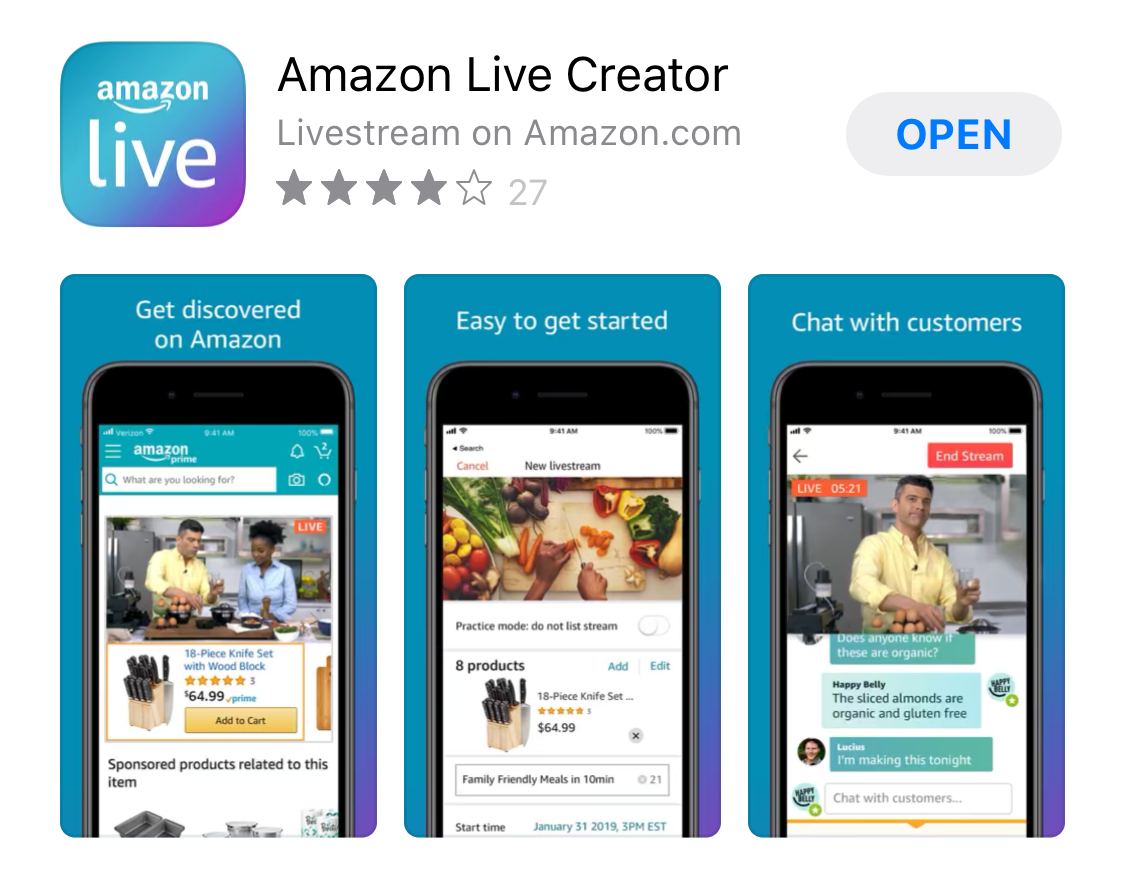There’s nothing new under the sun.
Is that a controversial statement? Probably.
Live stream shopping or Live Commerce has been around for decades.
Don’t believe it?
The funny thing about “live commerce” acting like it’s some new trend is home shopping networks have existed for decades. Think about QVC & HSN in the US.
So what’s different?
The demographic is distinct, and therefore live stream shopping is viewed as a “new idea.” Various channels and technology are used. Even traditional “home shopping networks” are expanding to digital channels.
This combination has created a personalized experience for users resulting in a ‘fresh’ trend.
So what’s the difference between live steam shopping and virtual commerce? Aren’t they the same thing?
No they’re not.
Let’s explore more, shall we?
The Live Stream Shopping Vs. Virtual Commerce Smackdown

Okay. So this isn’t a wrestling match, but it makes for a great visual.
While live stream shopping and virtual commerce may sound similar, they aren’t. Let’s start by understanding what each of these terms means.
What’s Live Stream Shopping?
The gradual change of technology has positively contributed to the live stream shopping trend.
The combination of social media features (live streams) and social influencers into a shopping experience has attracted many.
Not only is it convenient for potential shoppers, almost anyone can quickly create their own shopping television channel that’s also a social network and ecommerce platform—at a tiny fraction of the cost.
Mobile apps that use live shows have also been created. More prominent companies are also looking to take advantage of this trend.
 For example, the ecommerce giant Amazon acquired Twitch and launched live stream shopping.
For example, the ecommerce giant Amazon acquired Twitch and launched live stream shopping.
The Dreaded Global Pandemic
The global coronavirus pandemic accelerated changes in user behavior.
Widespread lockdowns pushed more people online. This situation encouraged businesses to invest in ecommerce.
All the added competition boosted digital advertising expenses. Previously, these expenses were considered so high and unsustainable that online-only brands rushed to take out leases and open stores as a cheaper way to acquire customers.
However, that changed. Social media platforms and other online advertising platforms sought to take advantage of the renewed investment and emerging opportunities to expand ecommerce. Consider the dominance of TikTok for Gen Z’ers.
Now that you know these drivers, is there room for AI-powered solutions?
Let’s explore more.
The Opportunity for AI-powered Solutions
Both Live stream shopping and virtual commerce are highly dependent on technology.

What’s more, there’s an opportunity for AI-powered solutions.
For virtual commerce, it would be helpful for ecommerce businesses to have the context of the shopper’s needs. This context would be most beneficial before the shopper is connected to the “live commerce” specialist.
Why is context important?
The specialist can provide a highly personalized and relevant experience.
Chatbots can also be quite helpful in the virtual commerce process.
For example, the salesperson can understand what the shopper is looking for and what they may be struggling to find.
Visual product configurators can help create compelling shopping experiences and have rich communications with shoppers.
For example, Shoppers can use Augmented Reality (AR) to design a space by browsing virtual or physical showrooms getting information about furniture and décor, and “seeing” what it looks like.
Where buyers have additional questions, they can use chatbots to have more details ironed out with a specialist’s support.
When it comes to live stream shopping, can the shopper engage with chat experiences during the event to ask questions and be served with the most relevant content/products based on individual needs and what was presented?
What’s The Future for AI in ECommerce?
The trend of live stream shopping is bound to grow and spread globally. This is likely to change the face of ecommerce.
What does that mean for AI in ecommerce?
Technological advances are expected to adapt to the changing forms of ecommerce.
For example, chatbots are consistently evolving to do more than answer customers’ queries.
AI assistants also represent an opportunity for ecommerce businesses to pivot into multiple channels. For example, a single ecommerce business can have live stream shopping and have virtual shopping without stretching too thin.
With projected growth in these trends, it’s clear AI-powered tools are the future for eCommerce.



